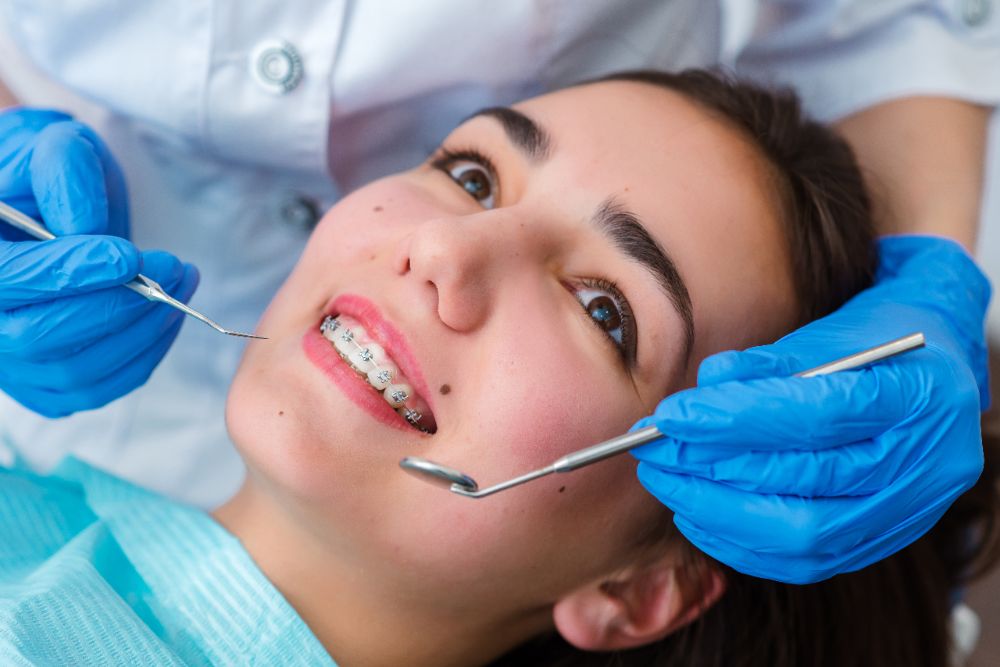How Cumming Orthodontics Can Change Your Smile with Invisalign and Braces
How Cumming Orthodontics Can Change Your Smile with Invisalign and Braces
Blog Article
Comprehensive Overview to Orthodontics Treatments for Fixing Oral Imbalances
In the realm of orthodontics, the journey to achieving a completely straightened smile involves a myriad of procedures customized to deal with dental misalignments. From standard braces to undetectable aligners and also medical choices, the area of orthodontics offers an array of services to attend to varying degrees of oral irregularities. Comprehending the intricacies of each treatment, including their mechanisms, benefits, and prospective drawbacks, is crucial in making educated choices concerning one's orthodontic therapy. As we browse with the extensive guide to orthodontic procedures for correcting dental imbalances, the detailed information of each technique will unfold, clarifying the path toward a harmonious and functional oral positioning.
Orthodontic Procedures Overview

Normal modifications and tracking are crucial parts of orthodontic treatment to make certain progress is on track and to make any necessary alterations along the way. By undergoing orthodontic treatments, clients can not only accomplish a straighter grin however additionally boost their total dental wellness and function.
Typical Braces: Just How They Work
When thinking about orthodontic treatments for dental imbalances, standard braces stand out as a tried and true technique for fixing teeth placing. Conventional braces consist of brackets, cables, and bands that work together to apply constant stress on the teeth, gradually moving them right into the desired positioning.
One secret facet of exactly how standard dental braces job is the procedure of bone remodeling. As pressure is put on the teeth through the dental braces, the bone surrounding the teeth is reshaped to sustain the new tooth positions. This renovation is essential for the long-term stability of the corrected alignment. People will certainly need normal modifications at the orthodontist's office to make certain the braces remain to apply the correct stress for reliable teeth motion.
Unseen Aligners: Cons and pros
Undetectable aligners provide a very discreet and convenient option to traditional braces for correcting oral misalignments. These clear, tailor-made trays are virtually unnoticeable when used, making them an enticing alternative for individuals seeking a more visually pleasing orthodontic treatment. Among the primary advantages of unnoticeable aligners is their removability, permitting for easier upkeep of dental hygiene compared to traditional braces. Patients can remove the aligners prior to consuming or cleaning their teeth, lowering the threat of food obtaining stuck in the appliance and simplifying the cleansing procedure.

Surgical Orthodontic Options
Surgical interventions in orthodontics existing feasible choices for attending to complex dental imbalances that may not be efficiently dealt with via traditional orthodontic therapies. While traditional braces and unseen aligners can remedy lots of orthodontic problems, specific instances need surgical intervention to attain ideal outcomes. Surgical orthodontic alternatives are typically advised for severe malocclusions, considerable jaw inconsistencies, and situations where the underlying bone framework requires adjustment to accomplish proper positioning.
One common medical orthodontic treatment is orthognathic surgical procedure, which includes rearranging the jaws to fix useful concerns such as trouble chewing or speaking. This surgery is usually executed in collaboration with an orthodontist that assists align the teeth prior to and after the procedure. Surgical orthodontics might additionally involve treatments to reveal influenced teeth, remove excess gum tissue, or improve the jawbone to create a more harmonious face profile.
Before considering medical orthodontic choices, patients undertake a comprehensive examination to figure out the need and prospective benefits of such go to this web-site treatments. braces. While surgery might appear daunting, it can substantially boost both the function and looks of the smile in instances where conventional orthodontic dental doctor near me treatments fall short
Retainers and Post-Treatment Care

Post-treatment care includes adhering to the orthodontist's guidelines vigilantly. This might consist of proper oral health methods, attending follow-up appointments, and using the retainers as recommended. Failure to follow post-treatment care guidelines can result in relapse, where the teeth gradually relocate back towards their initial settings. Consistent retainer wear, great oral health, and normal oral exams are important for maintaining the results attained via orthodontic surgery and guaranteeing the long-term security of the dealt with oral positioning.
Conclusion
In verdict, orthodontic procedures offer numerous options for dealing with oral misalignments. Surgical orthodontic alternatives are available for more serious imbalances. In general, orthodontic treatments can effectively enhance dental wellness and aesthetic look.
As we navigate via the detailed guide to orthodontic procedures for dealing with dental misalignments, the detailed details of each technique will unfold, dropping light on the course toward a unified and useful oral alignment. - orthodontist
One of the most typical orthodontic therapies is the usage of braces, which consist of metal brackets and cables that apply gentle stress to slowly change teeth into the preferred setting.When taking into consideration orthodontic treatments for dental imbalances, typical dental braces stand out as a time-tested technique for remedying teeth positioning. Furthermore, invisible aligners may not be suitable for complex orthodontic problems that call for even more significant teeth movement, as they are normally advised for mild to moderate cases. Retainers are tailor-made orthodontic gadgets developed to hold teeth in their remedied placements after the completion of orthodontic treatment.
Report this page